Outforia Quicktake: Key Takeaways
- Some fish appear “ugly” due to adaptations for their habitat, camouflage, attraction, or catching prey.
- Many “ugly” fish reside in deep-sea environments, where they’ve evolved to withstand extreme conditions.
- Many deep-sea fish use bioluminescence to attract prey in the absence of light.
- Some “ugly” fish, like the Asian Sheepshead Wrasse, can change their sex.
- Several species listed are ambush predators, using their unique features to capture their food effectively.
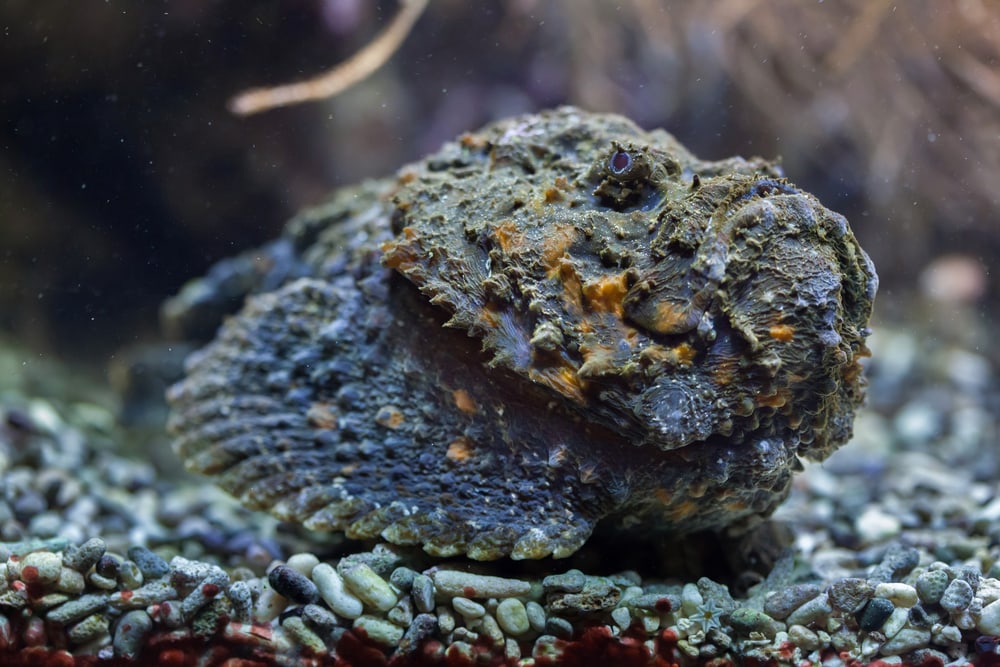
There are over 32,000 types of fish in the world today. Fish are often beautiful, colorful, and mysterious creatures.
But not all fish are pretty to look at. Some of them look like they were put together with cheap parts that were left at the bottom of a box.
Even if it seems strange to us, there’s usually a good reason why a fish looks “ugly.”
This may be:
- an adaptation to their habitat
- enabling them to hide (camouflage)
- to be attractive to the opposite sex
- to catch prey
Remember that something that looks ugly to us could be very attractive to another ugly fish of the same kind.
Read on to learn about some of the weirdest and most ugly fish in the world.
You May Also Like: 25 Fascinating Coral Reef Animals: Unveiling Nature’s Most Beautiful Ecosystem
1. Sea Lamprey (Petromyzon marinus)
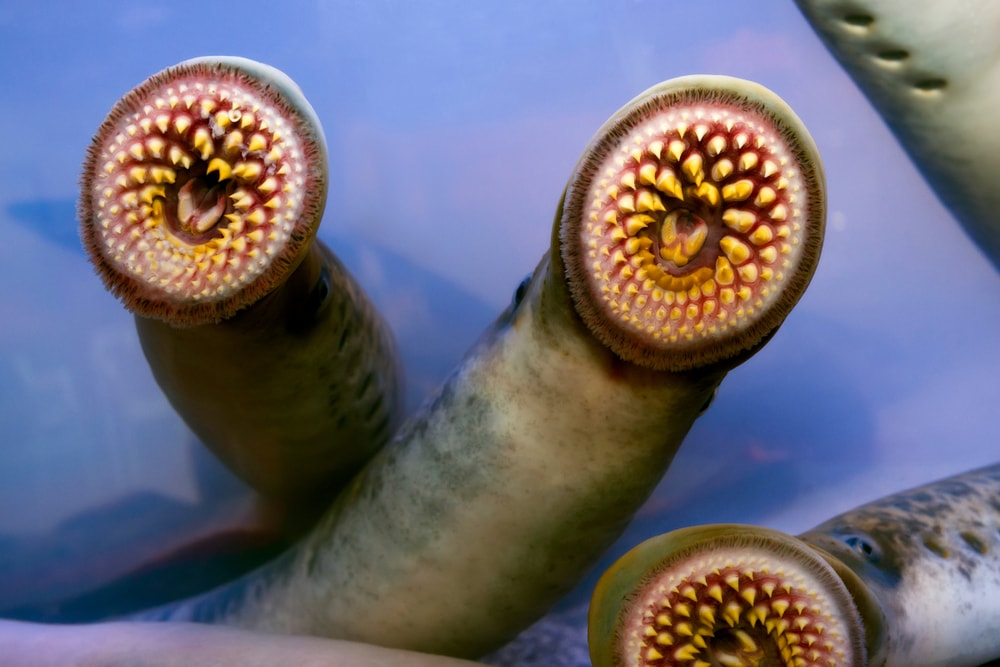
The sucker-mouthed sea lamprey looks like a fish crossed with a leech.
Lampreys slowly kill fish with bones, like sea trout, by hooking on to them with their sucker mouths and sharp rings of teeth. They cut a hole in the side of the fish and eat the blood and body fluids of the living fish until it dies.
In the 1830s, sea lampreys moved into the US Great Lakes and killed off most of the trout fishery there. They ate whitefish, perch, and sturgeon as well. One sea lamprey can kill up to 18 kg (40 lb) of fish a year.
Now the Great Lakes Fisheries Service controls lamprey numbers by targeting lamprey larvae with lampricides, which don’t have an effect on other fish. They also use pheromones, as lampreys use these to communicate.
Sea lampreys don’t have scales. They have soft skin instead. They also don’t have jaws or bones—just cartilage.
Sea lampreys are native to the western North Atlantic Ocean.
2. Asian Sheepshead Wrasse (Semicossyphus reticulatus)
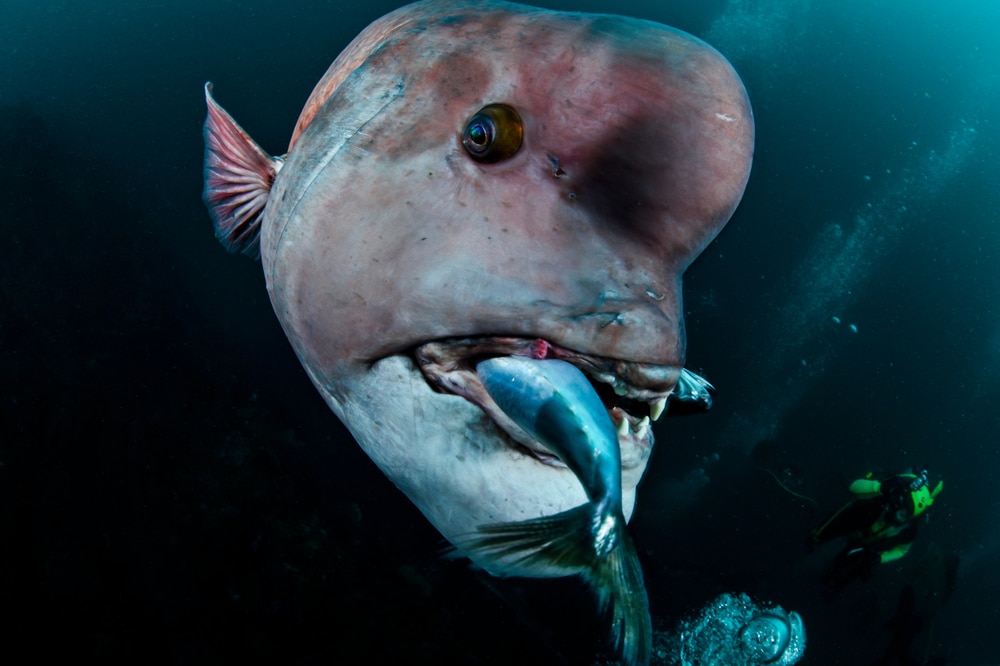
This bulky fish is one you wouldn’t want to meet outside in a dark alleyway. It has a thick, heavy lower jaw and a massive, lumpy head. An adult wrasse is light pink to brown in color.
The Asian sheepshead wrasse is also called the “Kobudai.” This is a Japanese name, as this is its place of origin. You can also find them in South and North Korea and China. It belongs to the Actinopterygii family of fish.
Young Asian sheepshead wrasses look nothing like their parents. They don’t have huge lumpy heads, and they are orange. Sheepshead wrasses can also change sexes.
3. Goblin Shark (Mitsukurina owstoni)
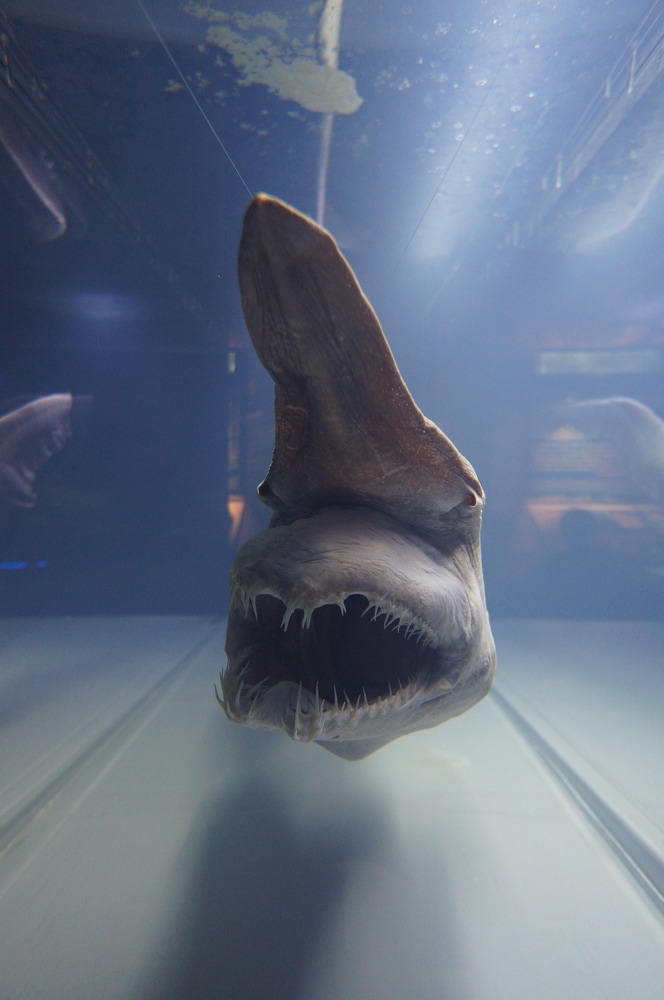
The incredible goblin shark can push its entire jaw three inches (7.6cm) out of its mouth to trap a fish.
It can do this with the help of three-inch (7.6 cm) long flaps of skin that are attached to its mouth. Of course, good looks don’t really come into this.
Goblin sharks live in the depths of the ocean, near the seabed. They occur near continental shelves. They are most often found in Japan. They’re named after the goblins of Japanese folklore.
Goblin sharks are not small either. A mature goblin shark can reach 12 feet (3.6 meters) long and weigh up to 460 pounds (208 kg).
4. Pacific Viperfish (Chauliodus macouni)
The Pacific viperfish swims along with its mouth open, trapping small fish and shrimp behind its long, needle-like teeth. It even has two bottom fangs that extend up past its own eyes.
The Pacific viperfish is another denizen of the deep sea. It lives from 200-1500 m (656 – 4,921 ft) below the surface of the North Pacific Ocean. It migrates upwards every night to catch prey that lives close to the surface, then sinks back down again into the darkness.
The Pacific viperfish is slightly bioluminescent as well, with a row of lights along its body. Despite its nightmare appearance, it’s only the length of a ruler (30 cm/11.8 inches).
5. Stonefish (Synanceia verrucosa)
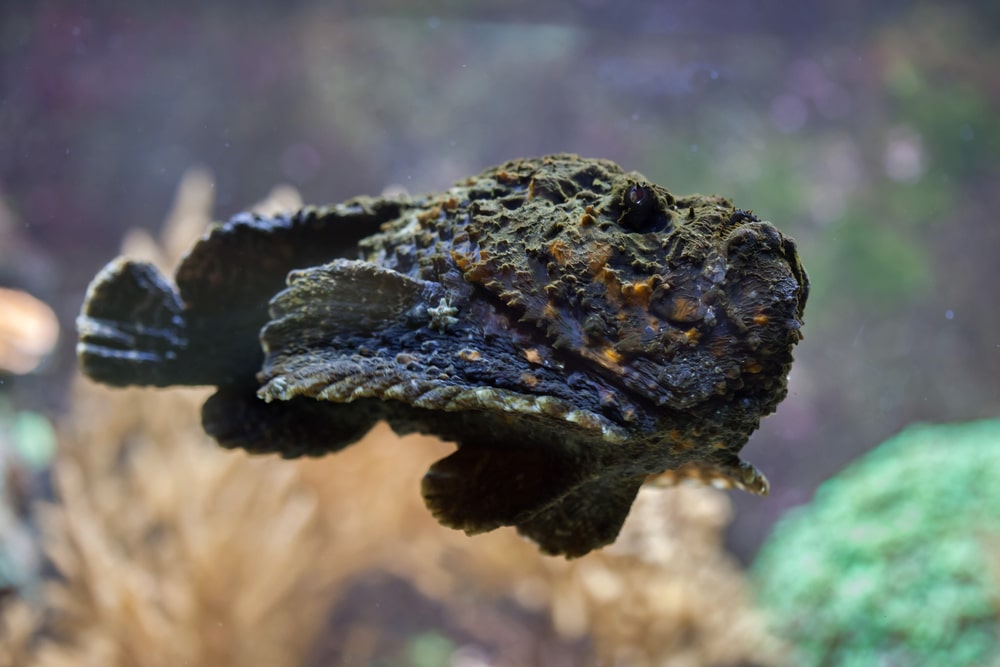
Stonefish are ambush predators and masters of camouflage. They stay very still on the seabed. Their frills and tags of bumpy skin blend in with the surrounding rocks and weeds.
When the prey is less than its body length away, the stonefish opens its mouth and creates a vacuum that sucks in the fish.
Stonefish are infamous for their venom. The 13 dorsal spines of stonefish inject venom if you step on one.
You can find stonefish in the tropical Indian and Pacific Oceans, from the Red Sea to the Great Barrier Reef in Australia.
They’re from the family Scorpaeniformes, which includes scorpionfishes. The stonefish family is called Synanceiidae. They reach 30 cm (11.8 inches) in length on average.
6. Hagfish (Eptatretus deani)
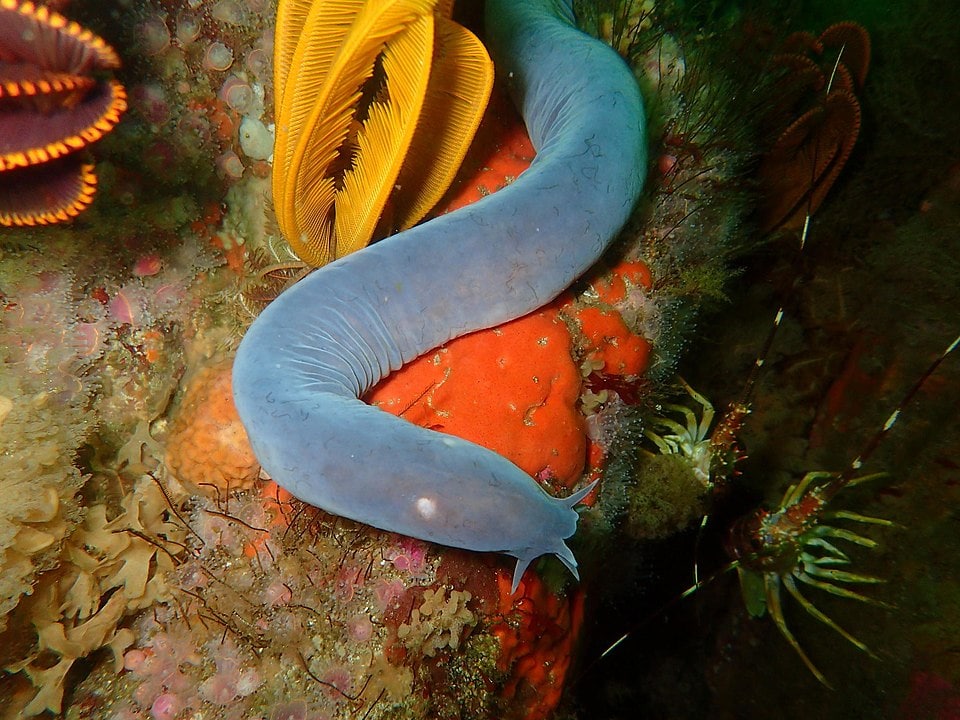
Hagfish are similar to lampreys. They kill prey by burrowing into it. They have slimy skin and four tentacles around their mouth, which they use to locate their unfortunate victims. They are blind. They use other senses, like smell, to seek a meal.
There are roughly 76 species of hagfish. They are found in the North Pacific and in Alaska.
Hagfish can go several months without food. When they do find it, they can absorb nutrients through their soft skin.
Hagfish can produce a very slippery slime to ward off predators. They do this by secreting proteins that turn to slime once in contact with seawater. Folklore tells us a hagfish can fill a 5-gallon bucket with slime in a matter of minutes.
Despite these unsavory facts, hagfish are still good to eat. Fishermen catch them when more favored fish are scarce.
Hagfish females are larger than males. This is known as sexual dimorphism. Females are 63 cm long (25 inches). Males are 48 cm (19 inches).
7. Anglerfish (Lophiiformes)
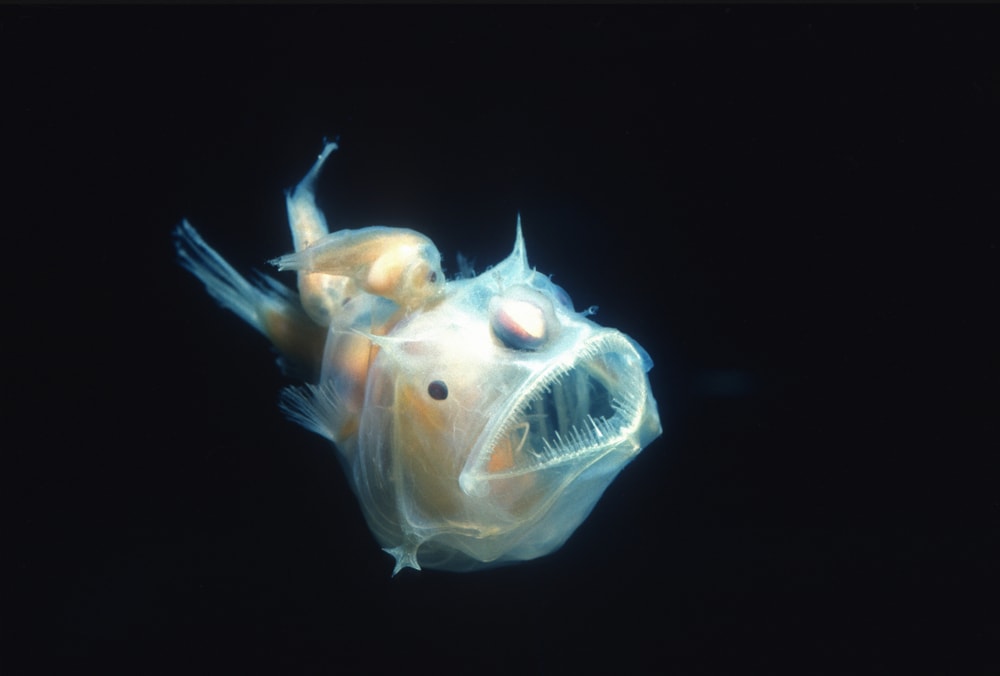
Anglerfish are most famous for their method of catching prey using their very own fishing lure.
The anglerfish entices small fish towards its lure, which is often bioluminescent. This means it glows in the dark. It then opens its huge toothy mouth and sucks them in.
Many anglerfish are deep-sea fish. The darkness enables them to use their glowing lure to catch prey. Other anglerfish live on reefs and use colorful lures to attract prey instead.
Anglerfish can be anywhere from 1 ft (0.3 m) to over 3ft (0.9m) long. There are 210 members of the anglerfish family. None of them are lookers, but some are more ugly than others.
Female anglerfish are much larger than the males. When it is time to breed, a male anglerfish buries his teeth in the female and is absorbed into her body, fertilizing her eggs. This is called “fusion mating.”
8. Gulper Eel (Eurypharynx pelicanoides)
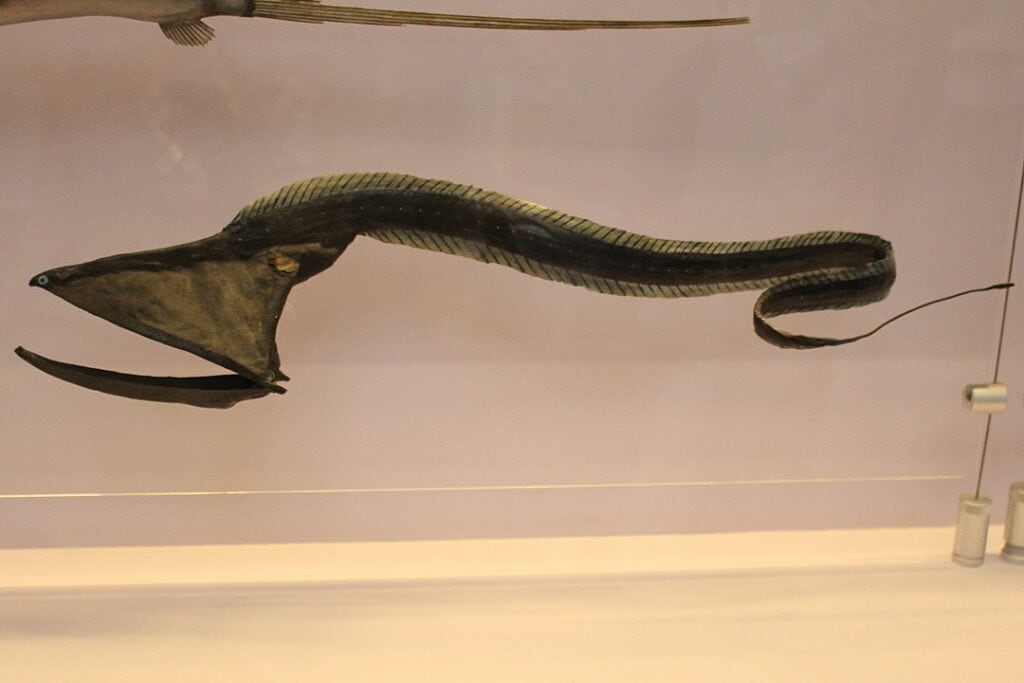
Gulper eels have enormous mouths that can stretch to swallow large prey. They can do this because their jaws are loosely hinged. Most of the time, the gulper eel is thought to catch small prey.
They are also known as “pelican eels” due to their ability to extend their mouths just like the pelican.
Gulper eels can be found in most of the world’s tropical and temperate oceans. They live at depths of 500 to 3000 m (1640–9842 ft) below the ocean’s surface. Not much is known about their habits, as they are not often seen.
Gulper eels may look scary, but they are only 2–3 ft (0.6–0.9 m) long. They have tiny eyes, which are thought to be able to detect faint traces of light.
9. Basking Shark (Cetorhinus maximus)

Basking sharks swim along with their mouths open, looking like they could swallow you whole. Not to worry. This shark is a gentle giant that only feeds on tiny zooplankton. These are microscopic animals that live in the water.
The basking shark can filter more than a couple million liters of water per hour through its gills. They are called basking sharks due to their habit of staying close to the surface of the water. This makes them look like they are sunbathing.
Basking sharks are considered endangered worldwide. British populations are reasonably stable. The basking shark is a native of British waters.
Basking sharks reproduce quite slowly. Their gestation period is 12 to 36 months. They are an egg-laying species. It’s a large shark and measures a length of 12m (39 ft).
10. Green Moray Eel (Gymnothorax funebris)
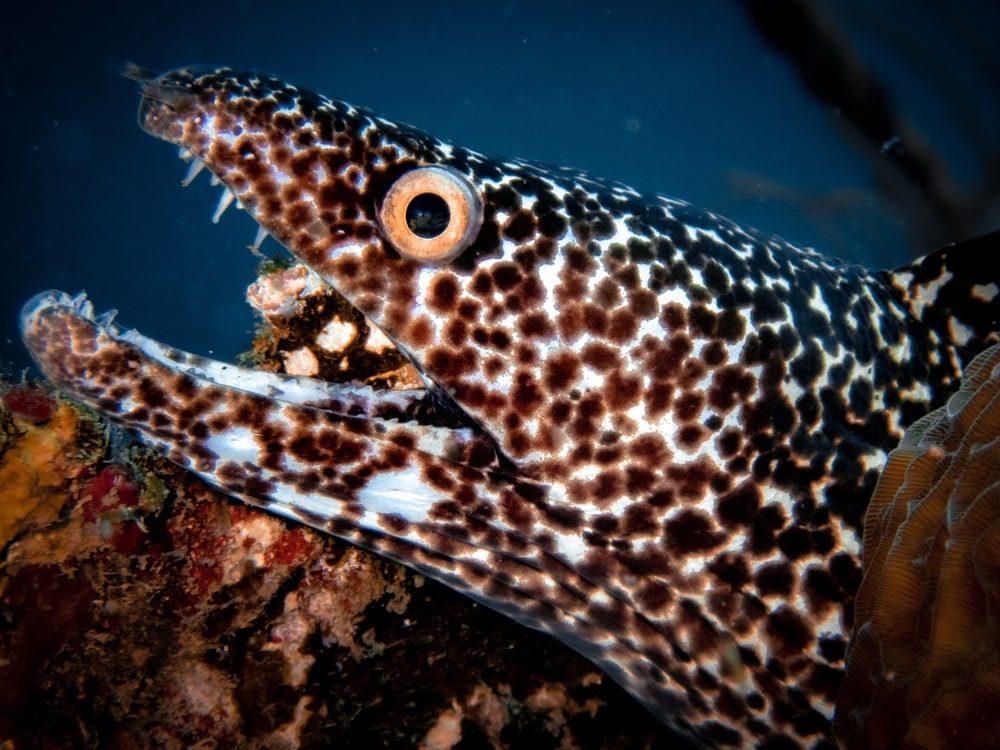
Moray eels are ambush predators. They lie in wait in crevices in reefs and rocks with their mouths open.
They have two full rows of needle-sharp teeth in their top jaw. These teeth can be very dirty and even poisonous. These teeth point backwards, which makes it difficult to remove the eel if you are bitten. This is to help the eel hold onto prey.
Although they don’t inject venom like snakes do, the mouth mucus of a moray eel contains toxins and possibly crinotoxins. These make a moray eel bite very painful, as well as making the victim susceptible to infection.
Moray eels are creepy. They belong to the family of true eels, the Anguilliformes. The Moray eel family of eels is known as the Muraenidae. They are wrinkly and pale green all over. Morays have yellow eyes, too.
Green moray eels are one of the largest morays, with a length of 8 feet (2.4 meters). They can weigh 65 lbs (29 kg).
11. Wels Catfish (Silurus glanis)
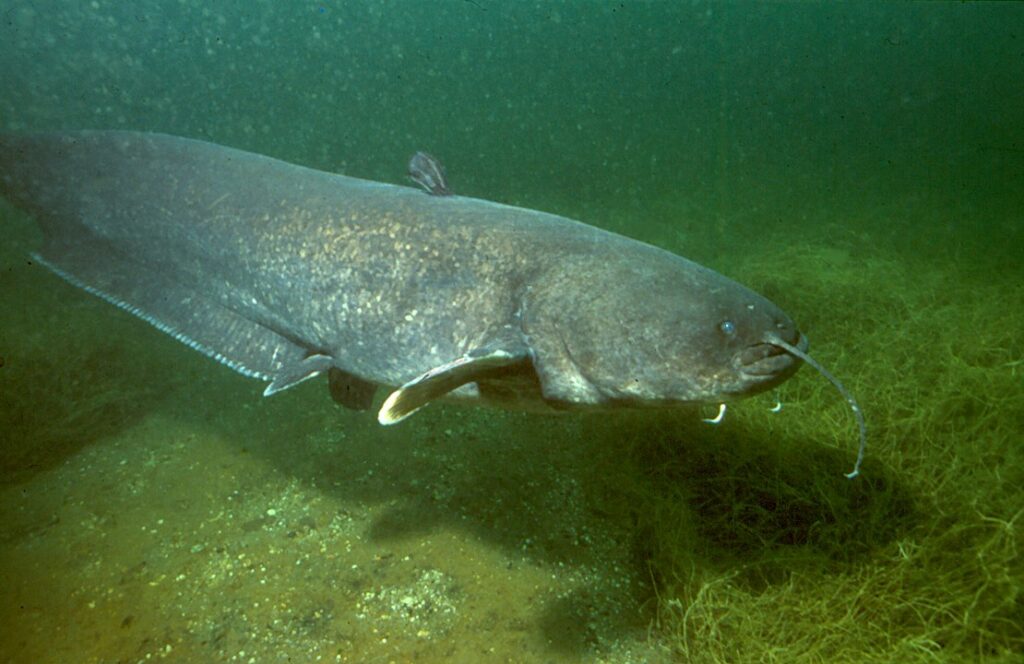
The massive, swollen stomach, huge cave-like mouth, and drooping barbels of the Wels catfish are enough to give any kid nightmares.
Wels catfish are freshwater fish. They live in slow-moving water and warm lakes. They can be found in Central and Southern Europe and in the Caspian and Baltic Seas.
It’s also known as the “Sheatfish,” “Danube Catfish,” and “European Catfish.” It’s a nocturnal carnivore that will eat crustaceans, fish, birds, amphibians, insects, and even small mammals.
One record specimen caught weighed 144 kg (317 lb) and needed four people to lift it. It measured 278 cm (109 inches) from nose to tail.
12. Blobfish (Psychrolutes microporos)

The blobfish is named for the fact that it looks like a shapeless, boneless pink glob. It even has a big nose and a sad mouth to boot.
It was named the World’s Ugliest Fish in 2013. This made the humble bottom-dwelling blobfish a star, with cuddly toys, characters, and memes inspired by it.
According to scientist Richard Arnott, the blobfish is only so ugly because it has suffered the effects of decompression after being scooped out of the ocean depths.
Given that it lacks a bony skeleton that water pressure could crush, it is well suited to this environment. Their body composition is mostly fat. The 2007 specimen found was named “Mr. Blobby”.
Blobfish live at depths of 600–1200 m (1,969–3,937 ft), where the water pressure can be 100 times what it is at the surface. In this environment, they look more fish-shaped. Blobfish live in the waters of Australia, Tasmania, and New Zealand.
“Mr. Blobby,” a specimen of Psychrolutes microporos, was 28.5 cm (11.2 inches) long, about the length of a ruler.
You May Also Like: Animals That Lay Eggs: The World’s Most Eggs-Ellent Creatures!
Ugly Fish FAQs
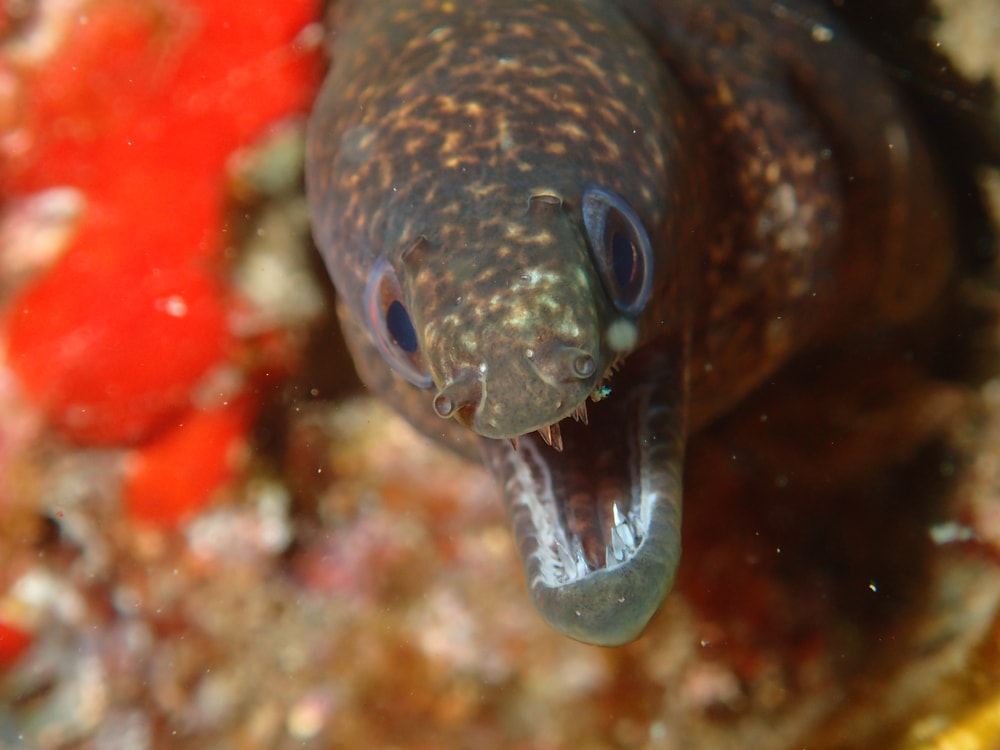
Why are deep-sea fish so ugly?
Deep-sea fish have evolved to withstand very different factors from the conditions we are used to, such as incredible water pressure or months without a meal.
They are well adapted to overcome these obstacles. These adaptations look strange or even an ugly animal to us.
Can you eat a blobfish?
Blobfish are edible, but their gelatinous texture makes them hard to cook. Some people have eaten them and found them to be safe but not appealing. They are not fished as an edible species but are sometimes caught in drift nets intended for other species.
What fish has human teeth?
The sheepshead or convict fish (Archosargus probatocephalus) has human-like teeth. It uses these to crush the shells of its prey, which are crustaceans and mollusks. You can find sheepshead fish off the coast of North Carolina.
Can the Asian sheepshead wrasse change sex?
The Asian Sheepshead Wrasse is one of the 2% of fish that can change from one sex to another.
Footage on David Attenborough’s Blue Planet showed a female wrasse undergoing a transformation into a much larger and more aggressive male. This doesn’t always happen, but it isn’t that unusual either.
Why do deep-sea “ugly fish” use bioluminescence?
At the depths where deep-sea fish such as anglerfish live, there is no light at all. These species of fish can’t afford to expend as much energy looking for prey as surface predators like tuna do.
Instead, they use bioluminescence, which is light produced by chemicals in their bodies. This attracts prey to them.
You May Also Like: 14 Ocean Animals Uncovered: The Fascinating World Beneath The Waves








